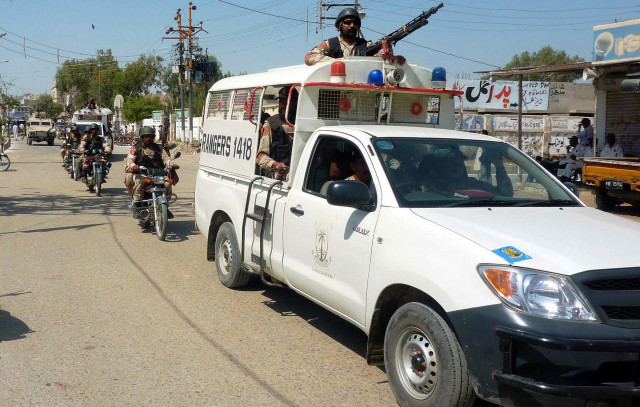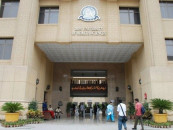Maternal mortality: Volatile situation keeps maternal mortality high in Orangi
The volatile law and order situation in Orangi Town prevents people from seeking help in other parts of the city.

“It is heartbreaking to see women deliver in such circumstances,” said Dr Nadia Afsheen, from Qatar Hospital. She was speaking at the Society of Obstetricians and Gynaecologists of Pakistan (SOGP) seminar at the Pakistan Medical Association (PMA) House on Saturday.
Qatar Hospital registered 15 maternal deaths last year of which three were dead on arrival. “All deaths were, however, avoidable since some of the women died due to the situation in the area while other deaths were attributed to a lack of facilities in the hospital,” she pointed out.
Even in such trying circumstances, Dr Ashfeen said the hospital had 53 “near-miss” patients. The hospital reported a maternal mortality rate of 36.8 per 1,000 deaths.
The seminar aimed at pointing out that the unavailability of reliable statistics from a larger segment of the population of Karachi makes it impossible to get a clear picture of the actual maternal mortality and morbidity figures.
The figures presented were collected from only five hospitals: Jinnah Postgraduate Medical Centre (JPMC), Civil Hospital, Karachi (CHK), Abbasi Shaheed Hospital (ASH), Sobhraj Maternity Hospital and Qatar Hospital. JPMC, CHK and ASH have three maternity units each but the figures presented were from only one unit.
Based on this data, the maternal mortality rate for the city stands at 500 deaths per 100,000 deliveries but experts believed this number is a mere reflection of the actual rate. The absence of data from private clinics and hospitals leaves experts making estimations.
According to Dr Asma Nazeer, six women died during pregnancy in the ASH gynaecology ward 1 during the year 2010. She said that the leading cause of death was “delays in identifying and recognising signs, deciding to seek care, and reaching a medical facility”.
Speaking on behalf of JPMC, Dr Haleema Yasmin said that a total 53 maternal deaths were witnessed at the federal hospital. Of these 41 were hospital deaths while 12 were already dead when they arrived. Most of the women who died were between 21 and 30 years old and around 60 per cent of them had died due to haemorrhaging.
The maternal mortality rates in private hospitals are “extremely low” but they still refrain from giving exact figures, said Aga Khan University (AKU) Hospital obstetrics head Dr Rahat Qureshi. Almost 15 per cent of the patients who die belong to low-income families and most of them died from hepatitis at number two. AKU informed the government of nine pregnant women who had died from H1N1 last year, she added.
“Even working at a large institution such as AKU, we work under strict limitations of resources,” she said. “No hospital in Pakistan has sufficient resources for the multitude of difficulties that they are faced with.”
JPMC obstetrics and gynaecology ward head Dr Shereen Bhutta said that, “in this day and age, deaths from sepsis (or blood-stream infection) are unacceptable and sufficient protocols need to be put in place and practised”.
“We keep harping on in order to make a difference but the issues remain the same. If this is what happens at major hospitals you can forget about what must be going on at small clinics and maternity centres.”
Referring to the Millennium Development Goals, Qatar Hospital gynaecologist Dr Shershah Syed said that, “success seems impossible looking at these figures since we do not even have all the data right now”.
Published in The Express Tribune, February 20th, 2011.



















COMMENTS
Comments are moderated and generally will be posted if they are on-topic and not abusive.
For more information, please see our Comments FAQ